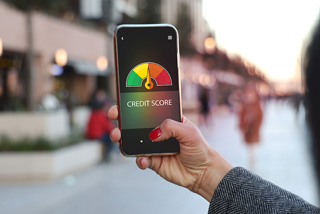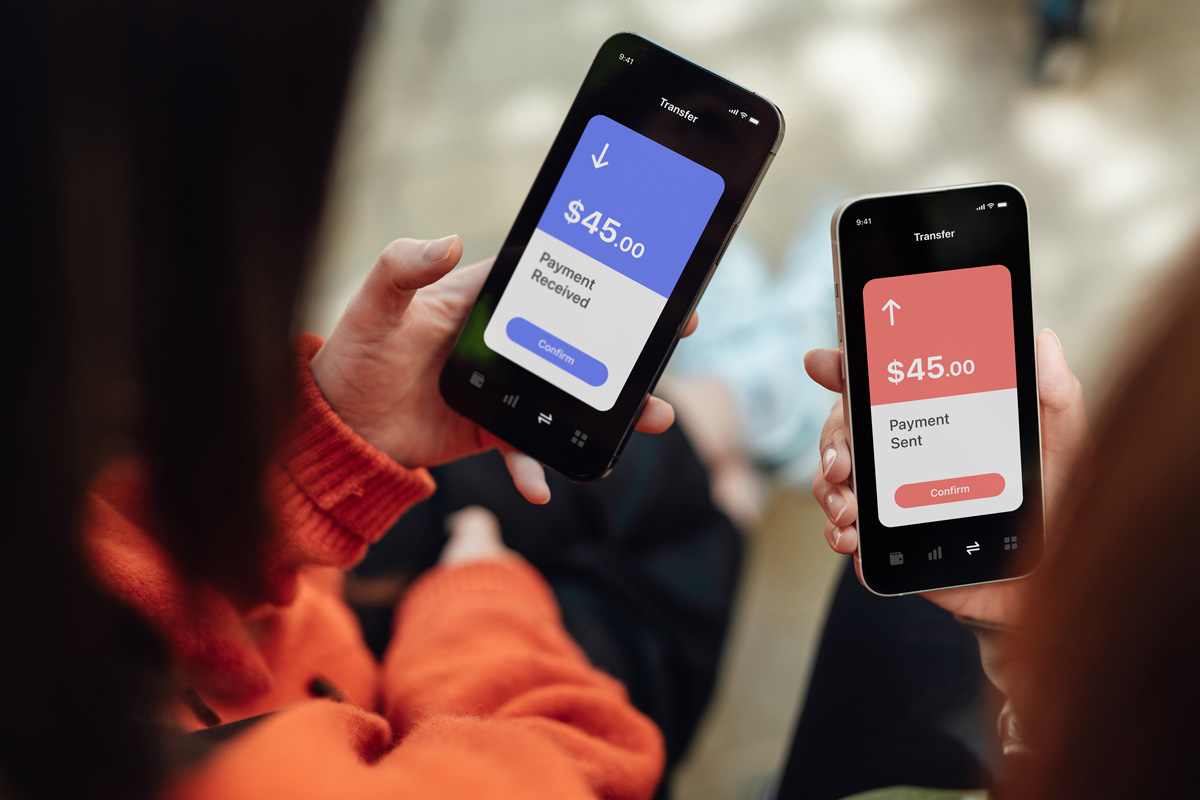
How to avoid falling for scams targeting digital payments

7 ways to teach your children to be smart about online scams

February 6, 2025

Key takeaways
Financial fraud isn’t new, but scammers exploit new technologies and methods of communicating to develop novel ways to trick you.
The latest scams to look out for include crypto, employment opportunities, fake QR codes and AI-powered calls and texts.
To protect yourself in the digital world, apply the same kinds of guardrails and behaviors you’d use in real life.
History is replete with con artists concocting elaborate schemes to swindle you out of your money. And scammers are always upping their game, making it challenging to spot the newest ruses. “Scams and scammers have been here since the dawn of time and always will be,” says Dave Pilot, vice president, Financial Crimes Disruption, at U.S. Bank. “What changes are the tactics they use and the technology and capabilities.”
Today’s fraudsters have found ways to exploit the digital platforms you rely on — online shopping and banking, social media, mobile apps, text messaging — and they can harness emerging technologies such as artificial intelligence (AI) to impersonate people you trust and create authentic-looking websites.
What’s more, Pilot notes, the proliferation of internet-connected devices and the ubiquity of digital interactions have given scammers multiple points of entry into your financial life. “If you’re connected to the internet, the internet is connected to your device. That road runs both ways,” he says. “It’s important to understand how many doors to your house are open and unlocked because of technology.”
Given all the evolving ways to be scammed, it’s no wonder that 28% more people reported losing money to fraud in 2023 than in the previous year, according to the Better Business Bureau (BBB) Scam Tracker Risk Report.
Here are some of the newest ways fraudsters are trying to convince you to drop your guard.
“If there’s one step you can take to help yourself avoid scams, it’s to keep your guardrails up the same way you would in real life.”
Dave Pilot, vice president, Financial Crimes Disruption at U.S. Bank
1. Crypto scams
According to the BBB, investment/cryptocurrency scams posed the highest financial risk to consumers in 2023. In one variation, you are intrigued by a friend’s social media post about an opportunity to invest in cryptocurrency. What you don’t know is that a scammer has hacked her account. So you click on a fraudulent website or app and begin investing in cryptocurrency. Since the phony trading platform is controlled by the scammer, you see enormous (fake) returns. But when you try to withdraw your gains, the scammer and your money vanish. (Fraudsters pitching crypto opportunities also lurk on dating apps.) Losses tied to cryptocurrency scams increased by 38% from 2022 to 2023, according to the FBI’s Internet Crime Center.
Another crypto scam relies on the thousands of Bitcoin ATMs in convenience or grocery stores and gas stations around the country that let you deposit cash to load Bitcoin and other cryptocurrencies into a digital wallet. You may get a call or email from a scammer posing as IT support from a well-known business or your bank informing you of fraudulent charges. You can recoup your losses, the criminal claims, by quickly scanning a QR code to deposit cash into a Bitcoin ATM — where it lands in the scammer’s crypto account. The Federal Trade Commission reports that scams related to Bitcoin ATMs resulted in $65 million in losses in the first six months of 2024, with a median $10,000 loss per person.
2. Employment scams
Online job boards make it easy to research available jobs — and for criminals to advertise fake ones or reach out to job seekers who have posted resumes. After a video interview, the scammer will offer you a position working from home and request that you complete a W-4 form for payroll. Now you’ve handed a criminal enough information to steal your identity and open new accounts in your name.
Another ploy is for the fraudster to dupe you into purchasing special equipment you need for the job, such as a laptop or new phone, or for training. Then the check they send to reimburse you bounces, leaving you on the hook for potentially thousands in losses.
3. Card skimming devices
Scammers have long installed devices on ATMs or point-of-sale terminals in stores or at gas pumps to steal your debit or credit card data. A hidden camera or fake keypad records your PIN as you type. The skimming device captures your bank account information, enabling the criminals to withdraw money from your bank account or make fraudulent purchases.
The latest twist is that criminals are using wireless Bluetooth skimming devices placed near a payment terminal to remotely steal and transmit your card’s data. Given that Bluetooth skimming devices are hard to detect and your data is transmitted instantly to the scammer, being targeted is quicker and easier than ever.
4. AI-powered calls and texts
Imposter scams are nothing new — think of those urgent robocalls from a supposed rep for the IRS or texts from the post office. What’s new is that scammers are using AI technology to clone the voices of celebrities, political figures, and even your friends and family members to trick you into parting with your money. It’s hard, after all, to hang up on an urgent call from a relative asking for financial help in a crisis, especially when the scammer has altered the caller ID to make the call look legitimate.
You may also get a text with a link to a deep-fake video of a celebrity asking you to donate to a charity that turns out to be a scam. A red flag: Criminals will demand that you send money via Venmo, PayPal, cryptocurrency, a wire transfer service like Western Union or in the form of gift cards — which are transactions that can’t be reversed.
5. QR code scams
QR codes are everywhere — on parking meters, menus, business cards, charging stations — and so are the scammers who are replacing a legitimate QR code with one of their own. Scan a fraudulent QR code at a parking meter, for example, and the swindlers have your credit card information, while you get stuck with a parking ticket or towing bill. Or they may send you a QR code by text or email, advising you to urgently fix a fictitious problem, such as rescheduling a package delivery, rectifying an issue with your account or paying a delinquent bill. The site the QR code directs you to may look real, but it is a conduit for scammers to steal your information or install malware.
6. Credit card denied scams
You’re checking out after purchasing an item online and you get a message that your card has been declined or that the transaction didn’t go through. You try another card — with the same result. The retail website is fake, and the scammer now has your email, your shipping address and information on multiple credit cards. Steer clear of unsolicited messages offering great deals online, and examine the URL of a retailer’s website to see if anything looks amiss, like odd spelling or the lack of “https://” in the address.
7. Brushing scams
A company sends you an item you didn’t order. No problem, right? What’s happening is the sender is trying to increase sales by posting a fake positive review under your name, claiming you are a “verified buyer.” That’s a scam — and a sign that personal information like your name, address, email and home phone has been leaked, which can make you susceptible to further fraud. According to the U.S. Postal Service, you can keep any unsolicited merchandise (or toss it), and you’re not obligated to pay for it. If the item arrives from a third-party seller like Amazon, file a fraud report and ask that the fake review be removed.
8. Payment platform scams
As peer-to-peer payment (P2P) platforms such as PayPal, Venmo and Zelle have become common ways to send money to friends, family and businesses, scams linked to them are spreading fast. In one scheme, fraudsters may tell you they’ve “accidentally” sent money to your P2P account and ask you to return it. Only the money that was deposited in your account is from a stolen credit card. Once you return the funds, the original deposit disappears, and you’re out the money you sent back.
Another P2P scam involves a scammer paying for an expensive item you’re selling online using a payment app linked to a stolen credit card. You accept the payment and send the item to the buyer, only to have the funds removed from your account once the fraud is discovered. A criminal may also impersonate someone at your bank to notify you about a fraudulent transaction, which can be fixed once you send money to yourself via a P2P app — and into the scammer’s account.
Employ cybersecurity best practices like keeping your systems and software up to date on your computer and phone, and regularly monitor your credit card, bank and other financial accounts for signs of fraud. When picking a payment method, remember that credit cards offer greater protection in the case of fraud than debit cards linked to your bank account. And contactless payments may be safer than swiping or inserting a card into a reader since tap-to-pay transactions are based on a one-time code.
But your best defense may be how you behave, Pilot points out. For starters, don’t interact with unsolicited texts, calls and emails other than to report and block them. Don’t click on links from unknown sources, and don’t even respond to unsubscribe. “Any interactions are dangerous,” Pilot says.
“If there’s one step you can take to help yourself avoid scams, it’s to keep your guardrails up the same way you would in real life,” Pilot says. “Would you talk to this person at the grocery store? If the answer is no, don’t answer their text message. Don’t respond on Facebook. Transferring that real-world security mindset to the digital space is the single most important step everyone can take.”
Learn more about what you can do to spot and help prevent financial fraud.


